Alternative route between "Praça Marques de Pombal " and " Praça dos Restauradores " through typical and narrow streets where you can find antiques, bakeries, restaurants with beautiful tiles, low cost supermarkets and very old shops. This route, in any other European capital, would be a pedestrian street.
 |
| CENTRAL LISBON MAP - FROM PRAÇA D. PEDRO IV ( ROSSIO ) TO PARQUE EDUARDO VII |
RUA DE SANTA MARTA
HOSPITAL DE SANTA MARTA
" SÃO JOSÉ DA ANUNCIADA " CHURCH
THE LAVRA FUNICULAR
( ASCENSOR DO LAVRA ( P ))
N 38.71788 ; W 9.14190
The Lavra funicular was not just the first of its kind in Portugal: it was the world’s very first street funicular. It was opened in 1884 and was originally powered by water, though it was converted subsequently to electricity in 1915. It climbs from the eastern side of the Avenida da Liberdade, on the Largo da Anunciada, up a 25% gradient to the Torel district.
 |
| N 38.71788 ; W 9.14190 |
THE "COLINA DE SANTANA"
" CALÇADA DO LAVRA "
THE " COLINA DE SANTANA "
( The hill of Santana or Sant'ana )
One of the seven hills of Lisbon, in the district of Pena.
There are some places with an amazing artistic heritage but at the moment, are not flyable. I believe this situation will change.
The highlight of the Campo dos Mártires da Pátria, former "field corral", point of sale and slaughter of livestock and also "Campo de Santana", by which name it is still known. He has served as the Bullring and the Flea Market, but today is a space with a garden (Garden Braancamp Freire), with a statue in the extreme that honors Dr. Sousa Martins (1843-1897), physician to whom were attributed miraculous cures . There are also the Church of Pena, Torel Garden, Palace of the Patriarchate and St. Anthony Hospital Capuchin. In the Palace of the Queen resided D. Catherine of Braganza when he returned to Portugal in 1693, and died the King D. John VI, on March 10, 1826. 100 meters beside is located in the Palace of the Counts of Pombeiro, which is currently installed the Italian Embassy, the Palace of Mitelo and the Largo do Mastro, where stands a baroque fountain, which was transferred from Belém.
 |
| RUA DA CRUZ DO TOREL |
THE " JARDIM DO TOREL "
( VIEWPOINT )
This public garden at the top of a hill has a view over Avenida da Liberdade and all of downtown. It remains one of the best hideaways in the city, with a café on the lower terrace. It can be reached with the help of Elevador do Lavra, the city's oldest funicular.
 |
| RUA JÚLIO DE ANDRADE AND JARDIM DO TOREL ENTRANCE |
 |
| JARDIM DO TOREL MAIN ENTRANCE |
 |
| DOWNTOWN SEEN FROM JARDIM DO TOREL |
L
JARDIM DO TOREL »»»»» AVENIDA DA LIBERDADE
( ALTERNATIVE Nº 3 AND Nº 2 )
You can descend the stairs leading to the Rua do Telhal . Turning left, walk 200 meters and will be in the Rua de São Josè.
But more interesting is leaving the Garden through the entrance door and turn left.
Following Rua Júlio de Andrade and you will begin to see to your left, three palaces.
In the first one, belonging to Xuventude Galicia, therea are a good restaurant and terrace open to the public.
Peek into the garden of the second palace and you will see a beautiful fountain. In front, a beautiful tile.
In the third palace at the end of Rua Júlio de Andrade, were shot several scenes of the movie "The house of the Spirits ," with Meryl Sreep and Jeremy Irons. At the end of this road lies the "CAMPO MÁRTIRES DA PÁTRIA"
ALTERNATIVE Nº 1
Rua Julio de Andrade
" CAMPO DOS MÁRTIRES DA PÁTRIA "
Known as Campo de Santana or Santana, is a street layout of the village of Pena in Lisbon.
It is a place full of history, located in central Lisbon, which served as a slaughterhouse in the sixteenth century and who knew many uses over the past two centuries. It was a bullring, from 1831 to 1891, performing flea markets, from 1835 to 1882 and even a vegetable market in the mid-nineteenth century.
In 1795 opened the Chafariz do Campo de Santana powered by Galeria de Santana, one of the galleries around town distributing water from the Aqueduct. The fountain was later dismantled.
In 1879, the former Campo de Santana has been renamed Martires da Pátria in memory of hanging in place on 18 October 1817, the 11 partners of Gomes Freire de Andrade suspected of conspiracy against General Beresford, President Board of Governors.
It is now a large garden about 2.6 ha in size. The southern half is occupied by the Garden Braancamp Freire (Campo de Santana), and in the far statue honoring Dr. Sousa Martins and the building of the Faculty of Medical Sciences, New University of Lisbon, which occupies the site of the old bullring.
Campo dos Mártires da Pátriua (Field of Martyrs of the Nation), together with its neighborhood of historical, artistic or picturesque in the parishes of Anjos, Coração de Jesus, and São José and Pena, was classified as a Public Interest
Campo dos Mártires da Pátria is really worth a visit! You can walk up the rather steepy hill at the end of Rua de São José or take the funicular of Lavra, the first transportation to overcome a hill in Lisbon, 120 years ago. In the nearby lovely park (Jardim Braancamp Freire) is a small cafe. This place is located on one of the 7 hills of Lisbon, the view from here is really wonderful.
H
STATUE - DR SOUSA MARTINS
( CAMPO MÁRTIRES DA PÁTRIA )
( N 38º 43' 15" ; W 9º 8' 26" )
Dr José Tomás de Sousa Martins (7 March 1843 – 19 August 1897) was a doctor renowned for his work amongst the poor in Lisbon, Portugal. After his death, a secular cult has arisen around him in which he is thanked for "miraculous" cures.
Born in Alhandra (near Vila Franca de Xira) he moved to Lisbon in his youth, and qualified in pharmacy (1864) and medicine (1866). He then practiced as a doctor in the Pena area of Lisbon, specialising in the treatment of tuberculosis. His work was entirely on a secular basis, but he was noted in his life for the care he gave to the poor. In 1897, he was poisoned by an unknown person possibly due to jealousy of his popularity amongst the medical community.
In 1904, a statue of him was erected in the Campo dos Mártires da Pátria in Lisbon, outside the current Faculty of Medicinal Sciences (New University Of Lisbon). This statue has become the centre of a quasi-religious cult in which the spirit Dr Sousa Martins is believed able to assist in cures. The foot of the statue is surrounded by marble plaques giving thanks to him for unexpected cures, some calling him "Brother", candles burn all around it and flowers are placed there.
His veneration was never recognized by the Catholic Church but it remains even today.
I
 |
| The " Campo dos Mártires da Pátria " seen from Viewpoint of " Igreja da Graça " |
THE GERMAN EMBASSY
( FORMER LAW SCHOOL ) +
THE GOETHE INSTITUT +
PARKING
THE GERMAN EMBASSY
( FORMER LAW SCHOOL )
FLORBELA ESPANCA
Florbela Espanca (1894-1930) is one of Portugal’s most known and loved poets. She was the illegitimate child of a housemaid and a nondescript father who didn’t acknowledge her until nearly twenty years after her death on December 8, 1930, exactly 36 years to the day of her birth. She is reputed to have been in love with her only brother ( a lieutenant in the Air Force ), also illegitimate, who killed himself by plunging into the Tagus River, very close to the Tower of Belém, in a solo flight. This poem, from her book Charneca em Flor, partly expresses her grief.
In Memoriam
To my dear dead brother
In the town of Assisi, “Il Poverello,”
holy, threefold holy, walked preaching
about the sun, the earth, the flower, the gentle dew,
from the sorrowful scourge of poverty.
As much evil as there is, there is that much good.
Everything is our brother! — And thus dreaming
along the roads of Umbria he was forging
the greatest link in the chain of love.
“Regard our brother Sun, our sister Water…”
Ah, Poverello! That lesson was lost
In me like a sail in the sea of sorrow
hit by furious gales!
— I was in life the sister of one Brother only
And now I am sister to no one!
Florbela Espanca, p. 202
Most of Espanca’s work, however much it expresses her tortured soul, was hopeful. However, her oeuvre contains a number of poems expressing final abandonment of hope and welcoming her own death. This unnaturally calm welcoming of death is related to the final shock of her brother’s death, also presumed suicidal. In particular, Espanca abandons, in certain poems, the desperate but paradoxically hopeful theme of a tormented loneliness unrelieved by anyone’s hearing her. Instead, she relinquishes hope for her own life in expiation for her inability to save (be a mother to) Apeles. With her own suicide, Espanca created an acceptable identity for herself as the sorrowful Stabat Mater, In place of the transgressive speaking woman who cried out to be heard.
Espanca’s marriage to her third husband, Mário Lage, with whom she seemed happy and able to relate as part of a normal family, threatened Apeles, unable to forge a normal relationship himself and unable to bear the “loss” of his mother/sister. These feelings were made worse by his sister’s response to his threat of suicide: “I can do nothing, nothing, nothing for you, and it is this that afflicts me most, desolates me, shames me like cowardice, as if you screamed for help and I didn’t even extend my arms to you” (qtd. in Bessa-Luis, p. 123).
The fact of Espanca’s emaciated condition at the time of her death suggests the erasure of a corporeality characteristic of her early work. Frequently, through verbs associated with orality, such as the wailing and weeping in “A Minha Dor” (p. 67), she expresses an inarticulate but distinctly physical appeal to be heard and a profound loneliness in the answering silence:
. . . . . . . . . . . . . . . . . . . . . . . . . . . . . .
And in this sad convent where I live,
night and day I pray and wail and weep!
And no one hears . . . no one sees . . . no one . . .
Livro de Mágoas (1919)
EMERGENCY ( ENTRANCE )
N 38.72007 ; W 9.13898
 |
| São José Hospital - Emergency Entrance |
 |
| SÃO JOSÉ HOSPITAL - FAÇADE AND MOMUMENTAL ENTRANCE |
I
" CAMPO DOS MÁRTIRES DA PÁTRIA "
J
PATRIARCHAL PALACE
Interesting building. At the central window, first floor, the Pope John Paul II greeted the crowd concentrated in the garden
Another reported project to become a hotel is that of Palácio da Patriarcal which remains abandoned. It’s a Baroque building of great historical importance because it was designed in 1730 by Ludovice, the architect of Mafra Palace. It was the residence of the Consul of Germany, received the visit of German Emperor and even of Pope John Paul II who stayed here during his visit to Lisbon in 1982. Inside there’s a monumental staircase, decorative paintings and plasters which are expected to be kept intact.
D
LARGO DO MASTRO
B
C
ALAMEDA DE SANTO ANTÓNIO DOS CAPUCHOS
CAPUCHOS HOSPITAL
" PAÇO DA RAINHA )
( The Queen's Palace )
G
 |
Catherine of Braganza, Queen of England, Scotland, Ireland, Infanta of Portugal. |
In 2001, a monument to Queen Catherine was installed in front of the buildings façade.
The Bemposta Palace (Palácio da Bemposta), also known as the Paço da Rainha(Residence of the Queen), is a neoclassical palace originally ordered built by the Dowager-Queen Catherine of Braganza after returning to Lisbon, in the area of Bemposta, now the civil parish of Pena. After many years as her residence, the building was transferred to the Casa do Infantada, before becoming the residence ofJohn VI of Portugal (until his death). It was re-purposed after Queen Maria II of Portugaltransferred its title to the Army, who established its Portuguese Military Academy.
Following the death of Charles II of England(in 1685), and leaving no legitimate heir to the throne, the Queen Catherine of Braganza (daughter of John IV) returned to Portugal in 1693. Without a home in Lisbon, she resided in the homes of various noblemen for a time, including the Count of Redondo in Santa Maria or the palace of the Count of Aveiras, in Belém. Thedowager Queen decided to purchase from Francisca Pereira Teles, the noble homes and fields in the center of Lisbon, in the area of Bemposta, in order to build her residence As there had already existed a chapel dating back to 1501, she requested that the architect, João Antunes(1642–1712), incorporate a chapel on the site plan to the invocation of Nossa Senhora da Conceição (Our Lady of the Conception). The project began In 1694, with Antunes coming on board in 1702, and by 1702 the Queen had already begun living in the palace. The building was a mixed construction: limestone and marble was used in many of the flourishes, but the structure was built of reinforced steel, wood and masonry.
Catherine died on 31 December 1705 in this residence, leaving in her testament thePalace of Bemposta to her brother, the King Peter II of Portugal. Peter occupied this home during his two regencies of Portugal: first, marching the Army to support the Archduke Charles of Austria during the War of Spanish Succession, and later in 1705, during the illness of his brother. On 29 October 1706 a royal chapel was constructed.
Later, King John V, in 1707, donated the Sereníssima Casa do Infantado (Serene Home of the Princes) to the dependencies of the Royal family, that included both the Palace itself and the lands surrounding. It became the residence of the Portuguese monarchy's Infantes and Infantas of the realm, such as Infante Francis, Duke of Beja(King John V's brother), one of the King's natural children (referred to as John of Bemposta) in 1742, and the Infante Peter.
After the 1755 Lisbon Earthquake, the palace required extensive reconstruction, including the Royal chapel which was completely destroyed. Under the direction of Manuel Caetano de Sousa (1742–1802), the building was remodeled and an elaborate chapel was constructed, with a rectangular vestibule and nave and polychromatic mosaics. In main alter, a portrait of the Royal Family, Queen Maria I and the Infante John with the court, in an iconographic representation of Lisbon, seen from the Castle of São Jorge. The success of the chapel, came from the contribution of the woodworkers from the Church of São Roque (and in particular the Chapel of São João Baptista). A similar design esthetic was also brought in from the Royal Chapel in the Queluz Palace. The Bemposta Palace had its own singers (since 1759) that incorporated an organist and singers, that were contracted and regularly performed in Lisbon.But, the organ had already been spirited away to the Palace of Queluz by 1778.
The palace too began to be abandoned, as the royals move to other preferred lodgings: by 1798 the palace was already abandoned and falling into ruins.
In 1803, the Prince-Regent, (future King John VI) lived at Bemposta.Even after the return of the Royal Family, in 1821, John returned to Bemposta, and with the intent of making the residence more habitable, began various renovations in 1822, 1824 and 1825, principally in the rooms behind the chapel and on the floor near the gardens. At Bemposta the politics of King John VI's reign played-out: including the events of the insurrections known as the Vila-Francada and Abrilada, and his eventual death (he died in his personal quarters, on 10 March 1826).
In 1828, King Miguel began holding weekly audiences in the Palace.
The designation as Casa da Infantada was removed in 1833, and the Palace is incorporated into the Crown's property. Until 18 March 1834, a formal political administration occupied the Bemposta Palace, but it was vacated and returned to Crown estates under QueenMaria II. Yet, the Queen later transferred the palace to the Army in 1837, where, after 1851, it began to function as an Army Academy (after extensive remodelling in 1850–1851), where, under General Bernardo de Sá Nogueira de Figueiredo, 1st Marquess of Sá da Bandeira, the building was expanded and interior remodelled. In 1853, the chapel, until this time a private hermitage, began to be open to the faith community. With changes in the urban planning in Lisbon, the area in front of the palace became reduced, and traffic along the avenue resulted in the shortening of the main outside staircase in 1860 (with the widening of the road).
The Palace of Bemposta is located in theLargo do Paço da Rainha on the eastern border of Pena with Anjos. The principal building, used by the military academy, fronts the Largo (square) across from the clock-tower and Mitelo Palace, in proximity of the Quartel do Cabeço da Bola, Jardim do Campo Mártires da Pátria (Garden of Campo Mártires da Pátria) and Miguel Bombarda Hospital.
The front façade includes two staircases that ribbon towards the main floor and veranda with balusters. The main arched doorway are flanked by two sets of tall windows, while a secondary floor veranda with main window is also flanked by two other sets (the central window, which is much taller than the others, is surmounted by sculpted coat-of-arms of the royal family. This façade is completed by a triangular wall adorned by the relief of two seraphs adoring the Virgin Mary (by the sculptor Joaquim de Barros Laborão, surmounted by a cross above a plinth.In the chapel's atrium there are two niches with statutes of Saint Elizabeth and John the Baptist (started by José de Almeida and completed by Barros Laborão).
F
E
Chapel
In the main chapel, there is a figure of the patron saint by the painter José Troni, with pictures of the Royal family in the foreground (including Maria I, John VI and Carlota Joaquina) completed by the English painter Thomas F. Hickey. On the ceiling of the chapel, in an ovular mould, there is a painting of the Virgin attributed to Pedro Alexandrino de Carvalho (1730–810). Along the lateral walls are pulpits delimited by balusters, while on the left side the organ.The lateral alters, with the exception of the second epistle, are marked by the acronym of Pedro Alexandrino. On the roof, in the middle of a complex Baroque scene is a painting by Pedro Alexandrino representing the Assumption of Mary, encircled by a crown of cherubs and four doctors of the church: Saint Augustine, Saint Ambrose, Saint Gregory Magno and Saint Jerome, while the painter also complete a painting of the Transfiguration on the roof of the chapel. The sacristy, with access on the left-side of the main alter, is covered in polychromatic azulejos, with a credence table made from Brazilwood.
" RUA DE SANTO ANTÓNIO DOS CAPUCHOS "
On this street, in an indeterminate adress, over a short period of time, lived the immortal poet Fernando Pessoa. It is located in this street the former convent of Santo António dos Capuchos. Today functions as Hospital. It has an amazing heritage of ancient ceramic tiles. Is not accessible to the public.
" RUA DAS PRETAS "
 |
| RUA DAS PRETAS |
JARDIM DO TOREL »»»»»AVENIDA DA LIBERDADE
( ALTERNATIVE Nº 4 ) -
Fastest route. Totally unknown. Along the ancient 14 th century wall (historic streets and very old stairs). Very typical . No beggars. No Rom pickpockets.
THE CHURCH OF PENA
Inaugurated in 1705, this church hides a rich gilded interior. Like many Portuguese churches, the simple façade gives no indication of the opulence of the decoration found inside, a fine example of the baroque style under King João V. The church pioneered this new style in Lisbon, considered quite daring at the time.
THE HOUSE WHERE WAS BORN THE GREATEST SINGER OF FADO:
AMÁLIA RODRIGUES
Visites not allowed
Amália da Piedade Rodrigues (July 23, 1920 – October 6, 1999), known as Amália Rodrigues, was a Portuguese singer and actress. She was known as the Rainha do Fado ("Queen of Fado") and was most influential in popularizing fado worldwide, as well as one of the most important figures in the genre's development. Enjoying a 50-year recording and stage career, Amália became the pre-eminent female fadista. She enjoyed an extensive international career between the 1950s and the 1970s, and was the main inspiration to other well-known international fado and popular music artists such as Madredeus, Dulce Pontes, and Mariza.
Amália Rodrigues remains today as Portugal's most famous artist and singer, a woman who was born into an almost destitute family and who grew to become not only Portugal's major star but also an internationally acclaimed artist and singer, whose career spanned 55 years of activity, recording songs in several languages (especially Portuguese, Spanish, French, English and Italian), versions of her own songs, most famously "Coimbra" ("April In Portugal") and performing all over the world, achieving tremendous success in countries like France, Italy, Argentina, Spain, the USA, Mexico, Brazil, Romania, Japan and The Netherlands, among many others.
Her personality and charisma, the beauty of her face and her extraordinary timbre of voice, gave depth and intense life to her chant: the impression she made on the public, her immediacy and the natural way she empathized with her public were tremendous and attracted more and more admirers throughout the world.
By the time of her death in 1999, Amália had received more than 40 decorations and honors from all over the world (mostly France, including the Légion d'Honneur, Lebanon, Portugal, Spain, Israel and Japan).
Most importantly Amália put fado as a musical genre on the map of world music, in dictionaries, libraries and musical essays. She paved the way for the generations that would follow, and that continue her legacy.
THE HOME WHERE DIED THE GREAT POET
" LUIS DE CAMÕES "
Visits not allowed
Luís Vaz de Camões (Portuguese pronunciation: [luˈiʒ ˈvaʒ dɨ kaˈmõjʃ]; sometimes rendered in English as Camoens /ˈkæm oʊˌənz/; c. 1524 – 10 June 1580) is considered Portugal's and the Portuguese language's greatest poet. His mastery of verse has been compared to that of Shakespeare, Vondel,Homer, Virgil and Dante. He wrote a considerable amount of lyrical poetry and drama but is best remembered for his epic work Os Lusíadas (The Lusiads). His collection of poetry The Parnasum of Luís de Camões was lost in his lifetime. The influence of his masterpiece Os Lusíadas is so profound that Portuguese is called the "language of Camões".
The " Beco de São Luís da Pena "
and The 14 th Century Wall
AMÁLIA RODRIGUES = FADO

" CASA DO ALENTEJO "
N 38.71574 ; W 9.14031
The Palace Alverca, called Casa do Alentejo, is a palace located in the parish of Santa Justa, Lisbon, Portugal.
Had its construction in the late seventeenth century. In the building came to running a school and a store for furniture. Already in 1919, it was installed one of the first casinos in the city of Lisbon, the Magestic Club. At that time the building underwent major changes. The restructuring ended 1919. In 1932 the Grémio Alentejano settled locally. Later, in 1981, the Casa do Alentejo bought the building. The palace has a square plan and three patios. Inside there are elements of tiles, especially the rooms of the restaurant. Contains parts neo-Gothic, neo-Arab, neo-Renaissance, neo-Rococo and Art Nouveau, as well as elements of the Baroque.
Very interesting. The visit is free. But works as cafe and restaurant. Thus, it is advisable to have a coffee and a bottle of water (less than 2 euros) and enjoy the beauty of the interior of the building.
The square is dedicated to the restoration of the independence of Portugal in 1640, after 60 years of Spanish domination. The obelisk in the middle of the square, inaugurated in 1886, carries the names and dates of the battles fought during thePortuguese Restoration War, in 1640.
The Monument to the Restorers is located in the center of the square.
The rectangular square is surrounded by 19th and early 20th century buildings. The most remarkable are the Palácio Foz, a palace built between the 18th and 19th centuries and boasting magnificently decorated interiors, and the old Éden Cinema(now a hotel), with a beautiful Art Deco façade dating from the 1930s, a work by architect Cassiano Branco.
Also notable is the old Condes Cinema, built in 1950 by architect Raul Tojal inModernist style. It now hosts the Hard Rock Cafe of Lisbon.
THE " HARD ROCK CAFÉ " (LISBOA)
GPS N 38.71641 ; W 9.14200
PARKING BESIDE HARD ROCK CAFÉ
THE SAME PARKING ( ENTRANCE NORD ), ON THE OPPOSITE SIDE OF AVENIDA
DA LIBERDADE
2
THE OLD KIOSK
Old Kiosk. Here, you can buy, load or reload the rechargeable card "7 COLINAS" or "VIVA VIAGEM"
3
THE OBELISK
GPS N 38.71614 ; W 9.14236
The Glória Funicular (Portuguese: Elevador da Glória) is a funicular that links Baixa (Restauradores Square) with Bairro Alto (Jardim / Miradouro de São Pedro de Alcântara), in Lisbon, Portugal. It is operated by Carris.
The Glória Funicular was opened to the public on October 24, 1885. At first it was designed as a water-powered system, then in 1886 it was replaced by a steam-power one, and finally in 1915 it was electrified
The place where this elevator ends its route is in São Pedro de Alcântara, right next to Bairro Alto, the most beautiful place to take pictures of Lisbon. In the following pages, I shall detail this location. It is part of the route that I suggest you should do when you visit Lisbon. The photo below shows the panorama observed from that location.
5
THE " PALÁCIO FOZ "
N 38.71664;W 9.14251
HERE IS WHERE YOU MUST PRESENT COMPLAINT If you are assaulted by pickpockets. ( Tourism police station - Palácio Foz )
THE " CINEMATECA JUNIOR "
( PALÁCIO FOZ)
INTERESTING MUSEUM OF CINEMA. ESPECIALLY FOR CHILDREN. AND ALSO FOR ADULTS.
THE PALACE
6
THE ÉDEN THEATER
7
THE AVENIDA PALACE HOTEL
HOTEL AVENIDA PALACE - RUA 1 DEZEMBRO, 123, LISBOA, 1200-359 PORTUGAL -










































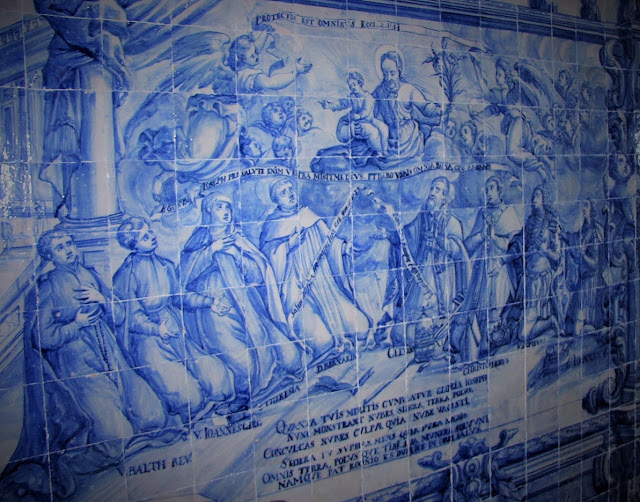



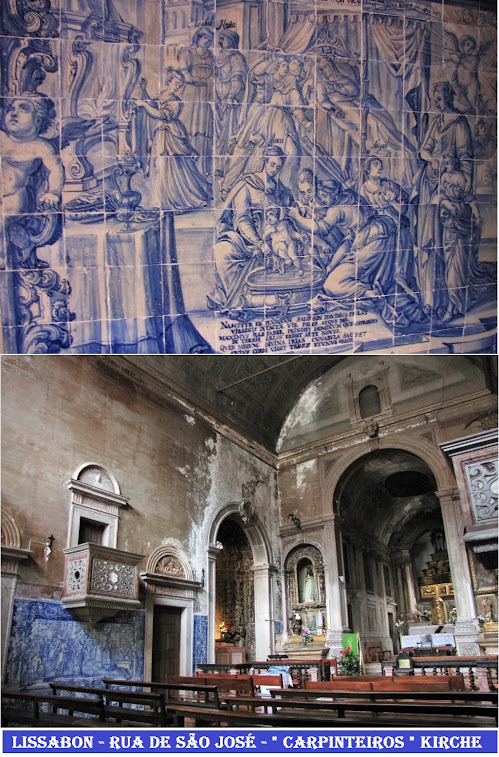



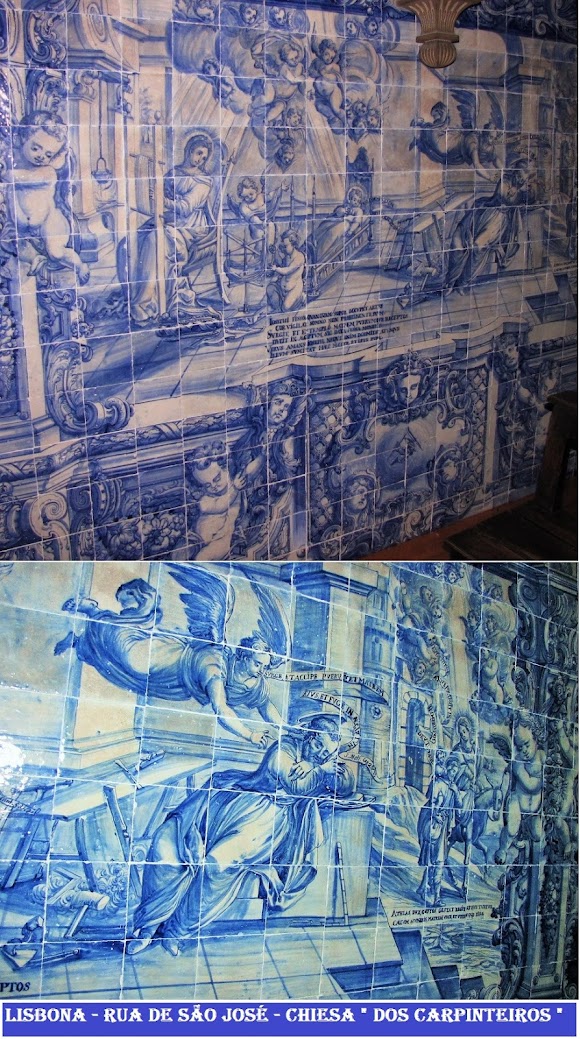









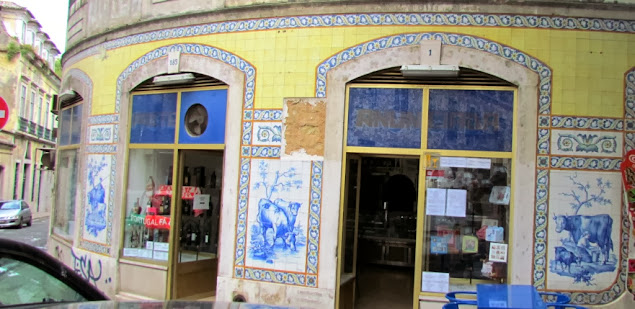




























































































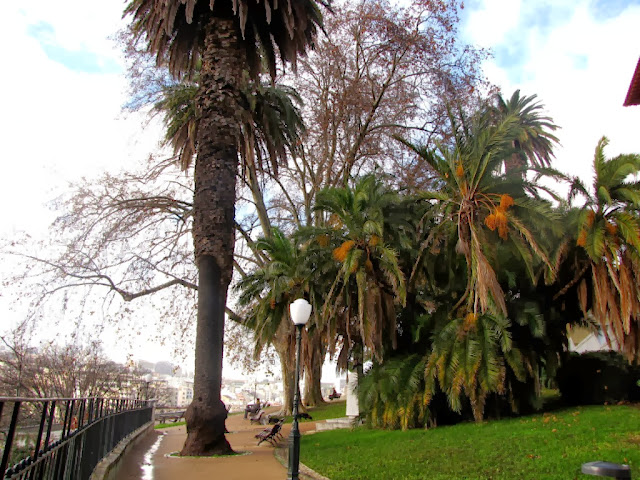





















































































.JPG)



















































































































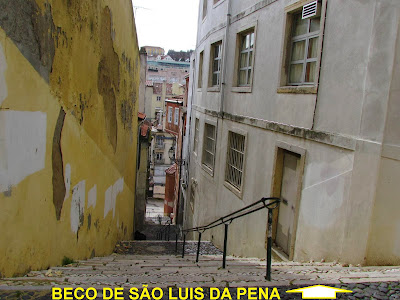


























.JPG)
.JPG)

.JPG)

























.jpg)
.jpg)
+-+2.jpg)

+-+3.JPG)
.jpg)
.jpg)
.jpg)
.jpg)




.JPG)
.jpg)
.jpg)
.JPG)
.JPG)
.jpg)
.jpg)
.JPG)



























































































